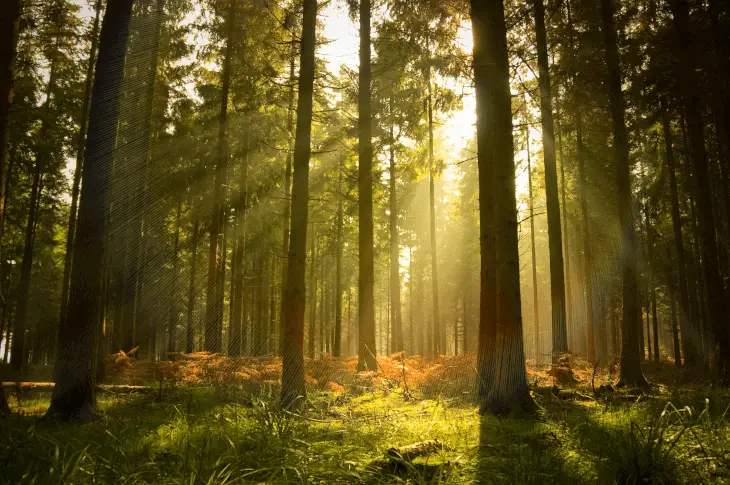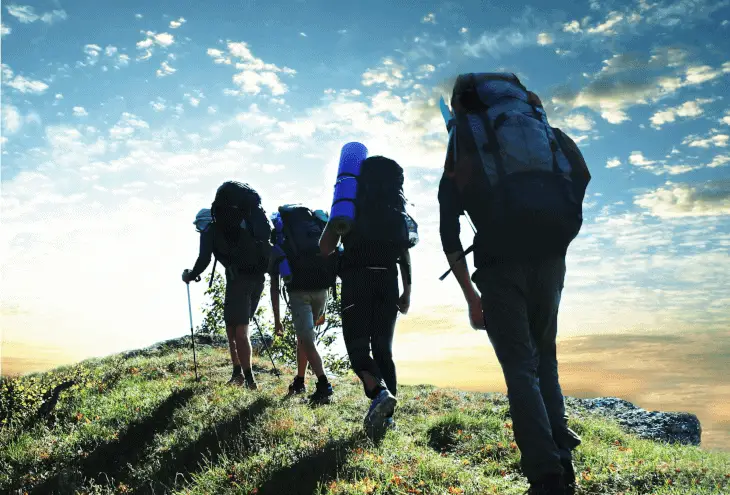We learn something new in every interview we do, and with that in mind, we’re happy to present our discussion with Paul of Arrowhead Equipment. Paul was incredibly generous with his time, and talked in-depth about a range of topics, from how to get your kids involved in camping and outdoor adventures, to the benefits of hammocks for bowhunters, to a game cart substitute for injured hunters, to the value of Scotch on an outdoor jaunt.
As we re-read Paul’s answers to get them ready for this post, two things jumped out at us:
1) Campers, hunters, and hikers really are do-it-yourself type folks. If there’s a problem—or even a mere imperfection—with a piece of gear, there are folks who are working on it. You might imagine that outdoor equipment is a “mature” industry, and there aren’t really that many advances to be made, but the exact opposite is true.
People like Paul are constantly dreaming up and designing new gear, and new ways to make the the outdoors accessible—from better bedding to lighter gear. That’s. That’s inspiring to see, and
2) We’ve met some really amazing people doing these interviews, and they all seem to share a common characteristic: passion. There’s a sense of joy in all of Paul’s answers, and though we’re technically talking about work, it never feels that way. This felt more like a campfire discussion, with two hikers talking about gear, and Paul gets pretty granular about what works for him.
So, let’s dive in! Thank you, Paul, for speaking with us! We hope to chat again soon!
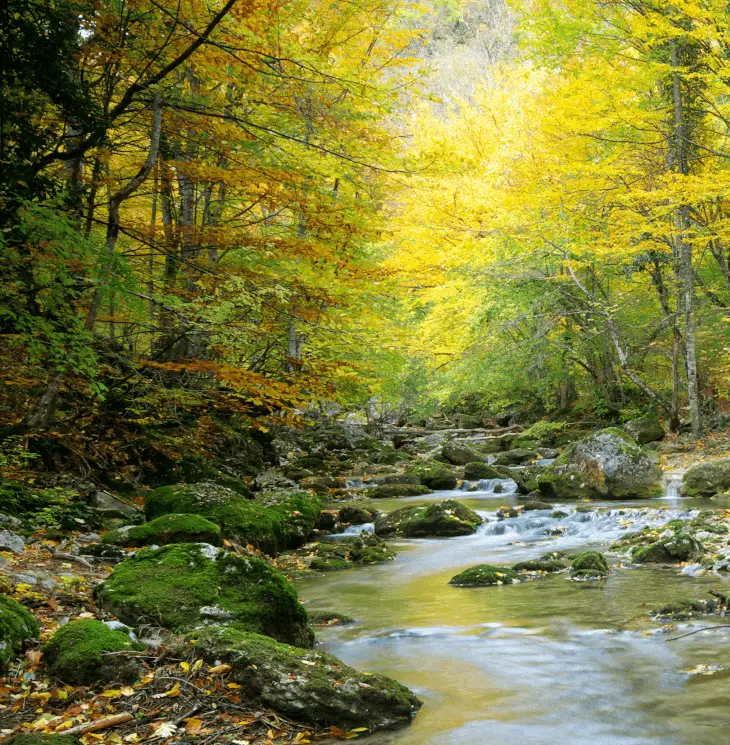
Q: Paul, thank you for speaking with us! Can you tell us a little bit about Arrowhead Equipment? Your history, your products, and your philosophy?
A: Sure thing. We started Arrowhead in the Summer of 2009. I’ve been in the outdoors all of my life, fishing, hunting, and backpacking, but in 2009, with our family construction business taking a downturn—and with my own desire to get out and hike and backpack more—I needed a way to fund my fun. I had become interested in hammock camping through a thread on a backpacking forum about getting a better night’s sleep, and I learned a bit about the gear and made a few pieces of my own as a way to keep inside of the budget.
I posted about what I had made and there were a few people interested…. but not very many shops were making hammock camping gear and accessories at that point. One item I came up with that got a lot of interest was a small pillow that attaches to the end of the hammock with shock cord to keep it in place at night.
So we offered them up for sale, named it the Cub Pillow (and later on, the Bear Pillow) and it got a great response. Over time we added to the gear we made, had folks offer up their ideas, and we purchased another business that was making quilts which quickly became a big part of what we do.
Our main driving focus is that we want to help folks enjoy their experience camping and hiking. If that’s by building a piece of gear that makes their trip more enjoyable, great. If it’s simply by sharing a cool spot to hike to, or teaching someone about how to do something, then that’s what we try to help with.
I have been hiking and backpacking now for nearly 30 years and I try to spend time every day on forums and bulletin boards answering questions about hiking, backpacking, hammocks, cooking, travel… really anything I can to share about being outdoors and making the experience as enjoyable as possible.
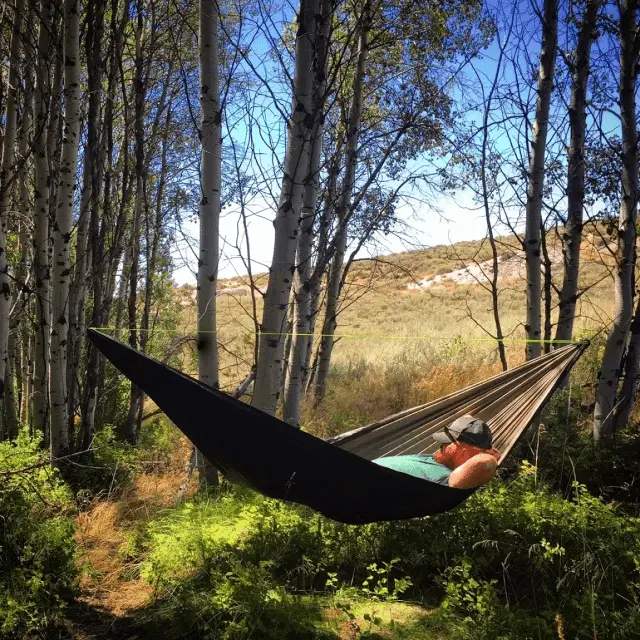
Q: You guys sell a lot of products—over 200 if we have that correct—but it seems like one of the products you’re best known for is hammocks. For our readers who are totally new to hammocks, why are they a good option? What makes them better than, say, a sleeping bag and tent? What would be a good “first hammock” for someone who wanted to check them out?
A: Yeah, we are mostly focused on hammocks and all of the gear and accessories that go along with them. Hammocks have really taken off in the last few years—when we started Arrowhead, there were only about three or four shops out there making any gear for hammock camping.
So I got into hammocks because one particular backpacking trip I took I had a horrible night’s sleep. I tossed and turned and was miserable all night. Before I had slept great on most camping trips but—as I’m getting a little older, I just could not get comfortable no matter what I tried. Back home I started looking for a solution and I found some posts online about camping with a hammock and how that made all of the difference.
It took me a bit of time and effort but I found what worked for me and I now sleep in a coma on trips. Even if all I can get is a couple of hours sleep in a hammock I am refreshed and ready for the next day. And a good night’s sleep makes a trip so much better than a crappy restless night.
The main advantages to hammocks are that they do not have any pressure points, so your body gets fully supported. Comfort is what draws most in and stands as the number one reason to use a hammock. No rocks, roots, pine cone, or anything else to poke you when you lay down. In some areas that also means being off the ground where bugs, snakes, and other critters that so easily get into your gear are no longer much of a concern.
You also have a good bit of freedom in site selection. All you need is two strong anchor points (usually trees but occasionally creativity is needed) and you can sleep just about anywhere…. the side of a hill that would have you sliding into the corner of your tent—when you’re in a hammock, that’s no problem.
Rain drains under you so you don’t have to find a spot that’s level. And it doesn’t need to be an already established spot, so you can be more flexible, be it looking to catch the first light of the day or be set up in a more secluded location off the trail and away from the beaten path.
As for models, for a first hammock, an 11-foot double layer is a really solid bet. You want a long hammock for the average adult and that means 11 foot at least. Most folks find discomfort in short hammocks, which are the trend from most resellers right now. Comfort comes from a good fit and length is king for comfort in hammocks. Traditional hammocks are even longer, usually 14-18 foot, but for hiking and camping, we trim that back a bit to keep weight and bulk down.
Hammocks are also something that you can customize to a huge extent, unlike most tent setups. Most tents come in X color, are Y size and include the few accessories needed. But hammocks come in a wide range of sizes, designs, and features, and the gear you need to complete a kit offer an even greater range of personalized options.
You can match the tarp, suspension, insulation, and accessories to your own needs and preferences. Many components work across multiple manufacturers. Pick brand A’s hammock and brand B’s tarp, and brand C’s quilts and it can all work together.
Q: We obviously have a lot of readers who are tried-and-true bowhunters, but we get a lot of readers who are totally new to the pastime, and even new to multi-day outdoor camping trips. They have a lot of questions, but we find that they have a LOT of questions about food. You sell a lot of cooking gear—can you give our readers some advice about cooking and eating on a camping trip? What to bring, how to pack it, and how to use it? Any insights you can provide would be very helpful!
A: Eating well in the woods is very important to me. Food is one of those things that for many of us really can make or break a memory. Have a terrible dinner, and you might have a terrible trip! The first step to me is to avoid the low-quality freeze-dried stuff. Most of it is bland, it never really re-hydrates well, and it’s often just… not very good. I prefer Pack It Gourmet for freeze dried/dehydrated meals. Much higher quality, much better flavor, and made like food you’d eat at home. Dottie’s Chicken and Dumplings—it tastes like fresh chicken soup.
Second, take some fresh food—an apple, at the very least. But if you’re willing to take it a step further, toss in a steak, small onion, a potato, and a couple of cloves of garlic along with a little olive oil. You can ditch a heavy skillet and pull it all off in a few feet of tin foil right in the campfire. If you toss the steak in the freezer six hours or so before you leave for your trip and keep it cool in your pack (our Dinner Bivy works great for that) it will just be thawing out for dinner the first night. First of all, you will make all your camp buddies cry in their half-cooked chili mac.
And second, you will enjoy that meal so much more, setting a good tone for the trip. Sure—you might need to choke down a few granola bars, but taking a few fresh things to cook a nice meal a few times throughout can really make a trip more enjoyable.
There are things I always have in my camp cooking kit:
- A small bottle of olive oil;
- Fresh garlic; and
- A small bottle of 12-year Scotch
The olive oil is great for cooking with, adds calories to any meal and re-packs easily in our Trekking Bottles, as does the Scotch. They won’t leak all over your pack and the flip top makes it easy to pour. The garlic will go a long way to improving just about any meal, and it’s not heavy or bulky and does not need anything done to add it to a meal. And, well, the Scotch should be self-explanatory!
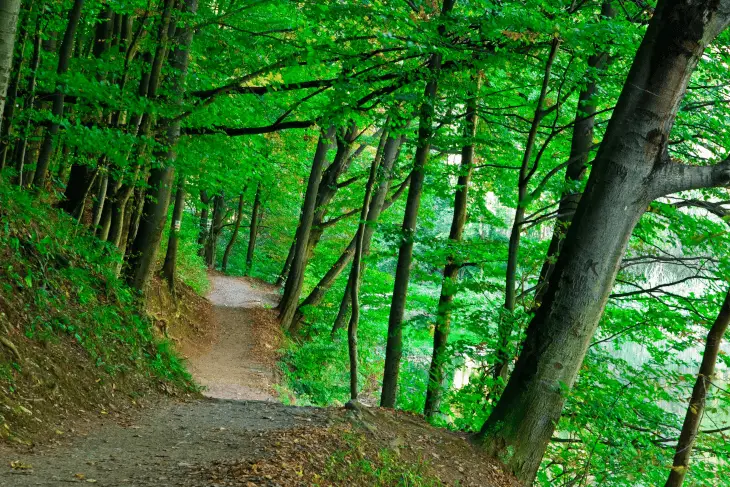
Q: We also see on your “About” page that you’re a family business, and it looks like you guys go on a lot of family trips—do you have any guidance for our readers who want to get their kids into hiking and camping? Any advice on what to teach them—or how to teach them?
A: First thing and number one to getting your kids involved in hiking, camping, and just about any outdoor activity is to just GO. Just get out there. Second, let them explore. With so many things bombarding us all the time any more (our kids included) from emails to video games to a constant stream of cat videos and work always lingering in our pockets, taking time to just go for a walk in the woods with no plan or schedule, no peak we HAVE to hike up, just a hike to nowhere—that lets everyone disconnect… which is what helps us as a family to connect.
The best times have been when we have gone up to the woods with no plan and just let the kids have time to walk around a bit, and before long their imaginations are kicking in and they start to have their own fun.
On trips, it helps to give your kiddos a job. Something they don’t normally do. Tending the fire is the job most kids love to be a part of. Or giving them a camera and having them take photos of the trip. A sense of responsibility for their job gets them involved. Teaching them animal tracks or how to build a fire are all things that most can share on any trip. We enjoy fly fishing on many trips so I like to take time one-on-one with them to help them catch a fish or with our oldest teach him more about his casting and work with him on his technique.
From there, just involve them in the process from start to finish. Make it a reality for them that part of it is packing the gear at home, and part of it is going to the grocery store and picking the meals for the trip, and that’s another perfect spot for them to be involved—let them choose some of the food. We often make pizza quesadillas… some cheese, pepperoni, and pizza sauce for a dip, cooked in the frying pan. Perfect.
Q: That Dixon Roller Pack is a unique piece of gear! That’s such a common-sense tool, we’re kind of surprised we haven’t seen more of it. Can you tell us a little bit about it, how it works, who uses, what kind of trip it works for? This might be a good fit for our bowhunters, who carry a lot of gear into the woods—particularly hunters who are bringing gear to a tree stand, or something like that.
A: The Roller pack is one of those cool pieces of gear (and a great company to work with) that we got involved with early on. Bob Dixon started making the roller pack years ago to help his daughter continue backpacking even though she had a shoulder injury. He began working to develop a way that she could still get her gear to and from camp without so much stress on the injury of carrying a pack normally. The frame is attached to a waist belt that distributes much of the load back on to a single wheel at the base of the frame. It works much like a travois, with most of the weight supported at the back of the frame on the wheel.
I use one mostly on family trips where I end up packing some of the kiddo’s gear along with my own. Because the wheel supports much of the load you can carry larger and heavier loads without it affecting the feel of how much you are carrying. They have been very popular for folks that have a back, shoulder, or neck injury that gives them pain with a traditional pack. Much like a pulk in the winter, the Roller Pack also gives you the ability to handle bulkier loads too. The frame has multiple lash down points and compression straps and can handle large duffle bags or gear sacks, be it for setting up a blind or packing a small wall tent even—not that we condone sleeping on the ground in a tent!
You can also make a few adjustments and carry it like a frame pack if needed. That lets you roll down the trails or pack through the thick brush as needed with just a few moments adjustments. For hunters it’s sort of like a game cart, but more trim and mobile.
Q: How do you come up with ideas for new products? It looks like you do a lot of field testing, but you also look for feedback from customers—how does all that feed into your design process? And can you give us an example of how customer feedback allowed you to create something new?
A: Yeah, we’ve had many suggestions over the years from customers that have helped us improve old designs and develop new ones. I certainly spend time thinking about trips, planning trips, and dreaming of what would make my trips better, and many ideas come from that. But we also try to interact with our customers all the way from their ideas and needs for gear to hearing back from them post-trip. And when we have heard of a need for something different or even an adjustment to what we already make, we take that very seriously.
Over the 10 years we’ve been around, I’ve regularly hosted what hammock campers call a Hang… basically a group get-together centered around hammock camping. We have hosted both backpacking trips and car-camping trips where folks from all over the country come to hang out, camp together, and talk gear. Through those trips, we have interacted with our customers and friends and sometimes an idea or problem is talked about and we brainstorm how to work on that.
One simple item, our Sap Sack, came from a trip where a friend was complaining about the ziplock bags he was using to keep his sap-soaked tree straps from getting the rest of his gear sap-covered. The ziplocks were falling apart and he hated that he was having to throw away the ziplock every few trips. He wanted something that was less disposable. We worked on a simple, lightweight, and affordable—but most importantly, durable—bag that keeps the dirty straps contained and would last for years of use.
Another trip a friend suggested that we should offer a bundle package for new folks who are just starting to consider hammock camping—all the things they would need to get off the ground. We came back and created our hammock kits, with a few levels from basic set-up to fully outfitted. It was as simple as organizing a bundle that can be ordered with a few simple choices, but you get everything needed to give hammock camping a try.
Q: This is more of a personal question, but I know that I love to read this sort of thing when I’m reading interviews with businesspeople—how do you keep a work/life balance? Running a cottage shop can take up 24 hours of your day if you let it, but it seems like you guys have made the commitment to keep outside and keep adventuring.
A: Balance for any small business owner is tough. You hear a lot of stories about folks working themselves sick or working their way right out of their marriage. We certainly struggled getting started. With a smartphone in your pocket, it’s near impossible to fully disconnect from work. And when every interaction, every question, every comment, and every problem is right there on your shoulders, it takes a tole quickly… but only really if you allow it to.
My wife and I had a number of talks during the first couple years trying to find a way to balance out work time versus family time. And basically, it came down to deciding on a cut-off time. Working from home/the garage made that tough but saying we are at work from a set time to a set time and then we are home helped. Being committed to that took a while but eventually, it’s gotten easier. While the impulse is to try and help every customer as quickly as possible, reality dictates that if we did that I could work all day and night, never rest, and never have a chance to get out in the woods ourselves.
So while some folks will sit up all night replying to emails immediately, we chose that we would not. During work hours, I pride myself on being very available. We have a Live Chat feature and the average reply is under 20 seconds, and I handle all of that personally. I put my personal cell phone number on a Thank You letter to every customer and if you need help after receiving an order I will talk with you and work to help any way possible. But just not while I watch my son play baseball or my daughter in her dance class.
I return every email we get and do it around a fairly normal 9-5:30 weekday schedule. That’s not to say work does not overlap, and we do spend time talking through things around the house, but we try and still make sure work is not life.
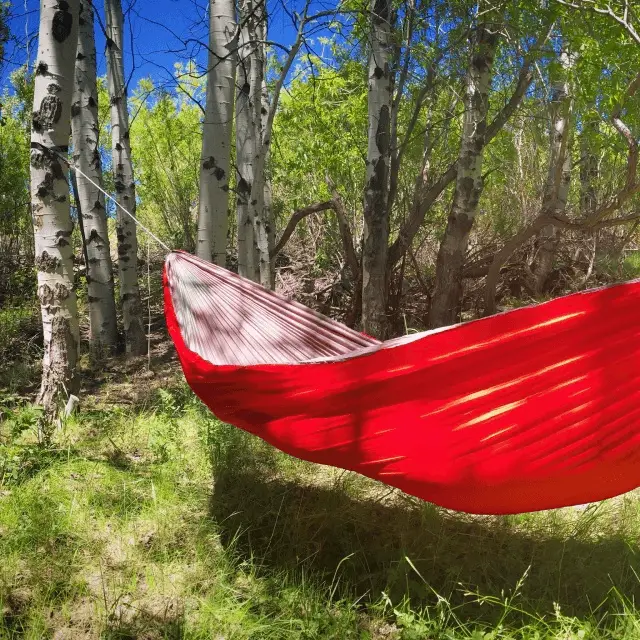
Q: Every product you create is built-to-order, and you don’t make something until someone orders it. In other words, every time someone requests one of your products, you make it *specifically* for them. That’s a rare and special thing, and from what we can see on the feedback you get on your Facebook page, you’ve got some truly devoted customers. The “outdoor adventuring” space is known for being super-competitive—how have you guys managed to make a name for yourself, and stand out in the way you do?
A: Thanks—we try hard. Mostly I try to be there for folks in ways that other companies are not. Both in the gear we build and the approach we take in what we offer, the way we build to order but without long wait times, and also in how we try to interact. I actively participate in a number of forums, Reddit, Facebook groups and all over social media in general. But we are not out there interacting just to say “we make X, come buy our stuff.”
No one likes that guy, the used-car salesman guy, who is clearly desperate for the commission. I worked in retail sales for a lot of years, interacted with a lot of “that guy,” and personally can’t stand that kind of sales. If you’re so desperate for an order no one will want to give you one. Instead, I try to help folks with any question I have some knowledge about. We all face the same challenges with hiking, backpacking, fishing, and hunting. Being warm, comfortable, and getting a good night’s rest so we can enjoy why we are out there is constant for all of us. Having first the knowledge and second the gear that makes our trips enjoyable matters to all of us.
If I have the knowledge, I look to share it with anyone that needs it. If we have the gear that helps, that’s good too.
Q: Last question: do you have a “dream” vacation? A hiking or camping trip you’ve been dreaming to go on? What is it?
A: I have been fortunate to have some great trips over the past few years. One of the best was a backpacking trip with friends into the Grand Canyon. That was a blast—a lot of work, but an absolute blast. I would love to do that trip again with my kids and wife. It has to be one of the most jaw-dropping places I have ever hiked through.
Amazing scenery and fishing shared with friends and family is a big part of why I like to get out. Beyond that, as a family, we have been talking a lot about traveling much of the US by RV (hammocks at the ready for hiking trips!) and seeing many of the national parks and monuments. Taking the drive up to Alaska is high on the checklist for that adventure.
< end >
Paul, thank you for taking the time to talk with us! There is a LOT here, and you’ve given us some great ideas for upcoming hunting trips! All the best to you and your family and Arrowhead Equipment!


